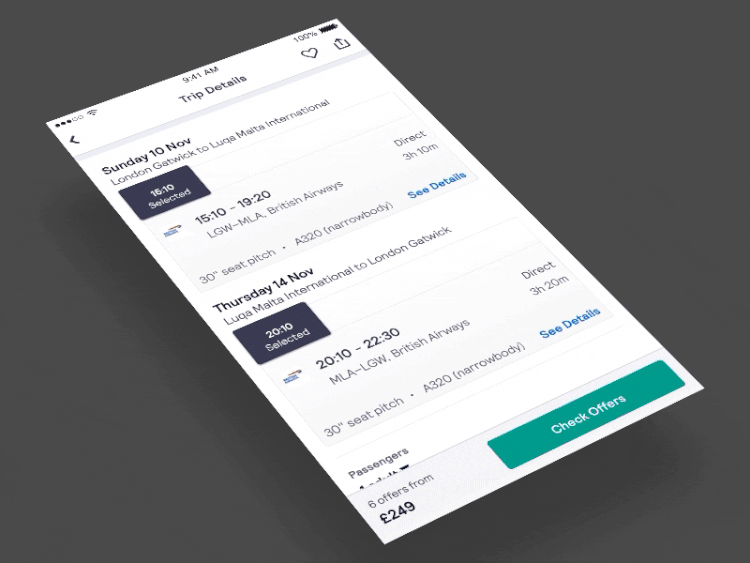But, the majority of this traffic still switches to a computer to complete their booking. This "isn't what travellers want," acknowledges Mr Dove and this certainly doesn't meet the needs of the next wave of travellers, many of whom are now demanding to be able to do everything from their phone.
"We've always focused on doing what's right for the traveller," explains Mr Dove and that is what is now taking the UK company down an alternative path; one that it acknowledges will not see it become a full-blown online travel agent (OTA), but will see it become the merchant for air bookings for the first time as part of a shift away from the metasearch-only model.
If you have attended any CAPA summit this past year you would have learnt how far Skyscanner has come since its inception. Between Aug- 2018 and Jul-2019, it put more than 172 million flight passengers in the air, more than most major airlines and the equivalent of one Boeing 787-9 Dreamliner every 64 seconds. In fact in Sep-2019, it revealed the value of flight tickets bought through its digital platform totalled USD23.7 billion in 2018.
Meeting traveller demand requesting it combine its global selection, price inventory with the convenience of its mobile platform, Skyscanner is now providing users with additional choice when it comes to booking flights via its brand mobile website and app as it adopts its "marketplace" approach.
The standard option to be transferred to a partner website to complete an online booking remains, but users can now book directly through Skyscanner, with the company handling customer service, securing payments and taking ownership of all of the ticketing logistics for passengers. A third option permits users to secure a fare via the Skyscanner mobile platform or app and it will handle the payment on the site but the airline or online travel agency partner will remain responsible for tickets.

Skyscanner's own flight booking service leverages the brand's significant mobile footprint and loyal user base for partners: it says 100 million people use Skyscanner every month, of which 60% come direct, while 90% of the company's 100 million app installs are organic.
The new offering also removes the high cost of localised customer care for partners, with Skyscanner providing 24/7 customer service, taking full responsibility for ticketing issues and trialing extras such as a flight disruption service. A self-serve cancellation functionality is planned in the future.
It can be seen as a clear development and strategy shift driven by Trip.com who acquired the business back in Nov-2016. The Ctrip brand in China has already used a similar strategy for some of its flight bookings and Mr Dove acknowledges Skyscanner has leveraged some of that technology.
While Skyscanner is only confirming to the public this development now, it has been pretty much working on it since its acquisition and trialling it since earlier this year with early customer satisfaction scores rate Skyscanner's service as 4/5. Phocuswire reports that a small group of users in Singapore have been able to trial the new platform since May this year, with Australia added in June and another small, logged-in subset in the UK from last month.
Mr Dove says "it's early days, but we've seen fantastic results with our new flight booking service." He adds: "Travellers who make their first booking with Skyscanner show a 52% increased repeat booking rate versus the mobile average for partners, a higher conversion rate and a higher provider selection rate."
Partners to the new flight booking product include Ctrip, JetMax and CheckMyFares, with three further names expected to be added by the end of the year. The service is to be launched in more markets in early 2020 and through the remainder of the year and could latterly be expanded to include hotels and other products. It could also be extended to the Skyscanner desktop website and NDC connections could also allow it to offer ancillary products in the future.